What Type of Lighting Is Best for Chicken Houses
- Home
- Coops
- Lite
Lite in the chicken coop: is it necessary?
Every bit winter days describe in and nights abound darker earlier, practice your chickens need extra light in the coop?
December's winter solstice (or June's, if you lot're in the southern hemisphere) sees daylight hours reduced to, at about, 8, from a summer high of between fourteen and 17 hours (eighteen in northern Scotland, UK; 24 hours in northern Alaska!).
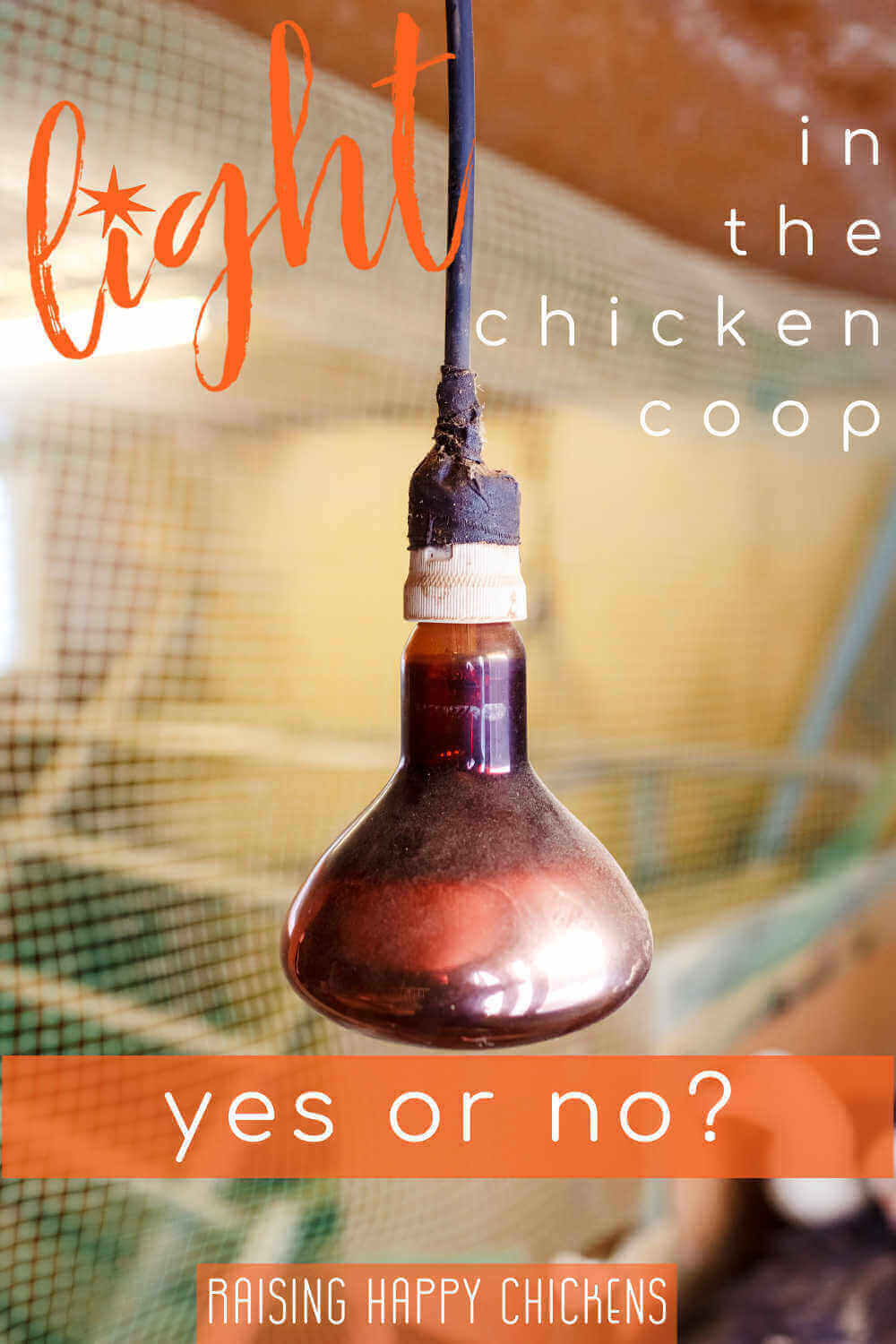
In the far north of Scotland it can be every bit trivial as six hours, in Alaska even less - effectually iii to 4 hours.
So how does the declining lite affect chickens?
And should we exist providing them with boosted lite during the dark, winter months?
Why accept actress calorie-free in the coop?
As solar day length approaches xiv hours per day during early spring, chickens brainstorm laying eggs, gradually increasing their production as the day length increases.
Studies show that they reach their maximum egg laying potential when daylight reaches around 16 hours per twenty-four hour period(one). Information technology's a wonder of nature matter.
More than low-cal ways more than eggs means more than chicks.
And chicks hatched in the warmer Spring and summer months are more than likely to survive than those hatched out in harsh winter weather condition.
As light decreases naturally, so exercise a craven's egg-laying hormones.
Commercial egg producers, and some lawn chicken keepers, add together calorie-free to coops in dark winter months to continue their hens laying for as long every bit possible.
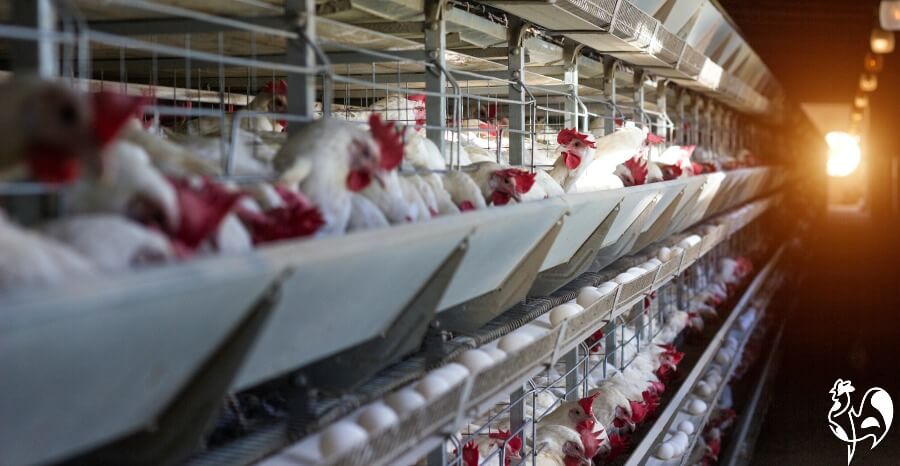 Commercial units add light for more eggs.
Commercial units add light for more eggs.
Hither's what's covered in this commodity.
This is a long and very detailed article. If yous desire to jump to a item section, use these links. Otherwise, carry on reading!
What's the biological science behind how low-cal affects chickens?
Chickens "see" calorie-free differently to humans. They take more sensitive eyes and come across light more than intensely than we practice.
Right higher up and slightly behind the eye is the pituitary gland. Light enters through a thin part of the hen's skull and stimulates that gland to produce a hormone.
The hormone is carried in the bloodstream to the ovary. In the ovary, it triggers eggs to be produced. Long days of fourteen+ hours of daylight hateful the hormone menstruation is triggered and maintained. Hens produce an egg a 24-hour interval - or thereabouts.
Less low-cal ways no hormone, and so no trigger. That's why nearly hens stop laying in one case daylight drops to under 14 hours.
It'southward really that simple.
But non quite.
Because studies have also repeatedly shown that supplying light for more 17 hours actuallydecreases egg production(2).
So the optimum daylight time required to encourage hens to lay the optimum number of eggs is betwixt xiv and 16 hours per day.

Does the type of low-cal in the coop affair to chickens?
Studies(2) accept shown that the intensity of light does matter in large commercial productions, and should be at least 5.38 lumen, with the optimum being 15lx.(iii).
Other studies(iii and four) suggest that the colour of low-cal is also important: white and red lights stimulate production more than than bluish or greenish.
Seriously - blue or green lights? It would be plenty to put any chicken off.
In any event, the jury is yet out on whether light colour matters. If you lot're going to add calorie-free to a lawn coop, a soft white lite closest to daylight is probably the best.
Does extra lite harm the chickens?
There's no testify of this in adult hens. You'll see some blog manufactures saying it decreases the hen'due south life because she'll go "spent" unless she has a break from laying.
That'due south non true.
What is true is that a hen is hatched with all her potential eggs already inside her. She can't increase that number. There'south no need - information technology runs into the thousands.
So producing eggs during the winter won't shorten her life, just information technology may shorten her egg-laying life.
It's a different story for immature pullets, though(5). Too much light likewise before long can cause a young craven to develop before her body is fix to back up egg-laying.
For that reason, it'due south not recommended to provide artificial light for hens under the age of sixteen weeks. 20 weeks is safer nonetheless.
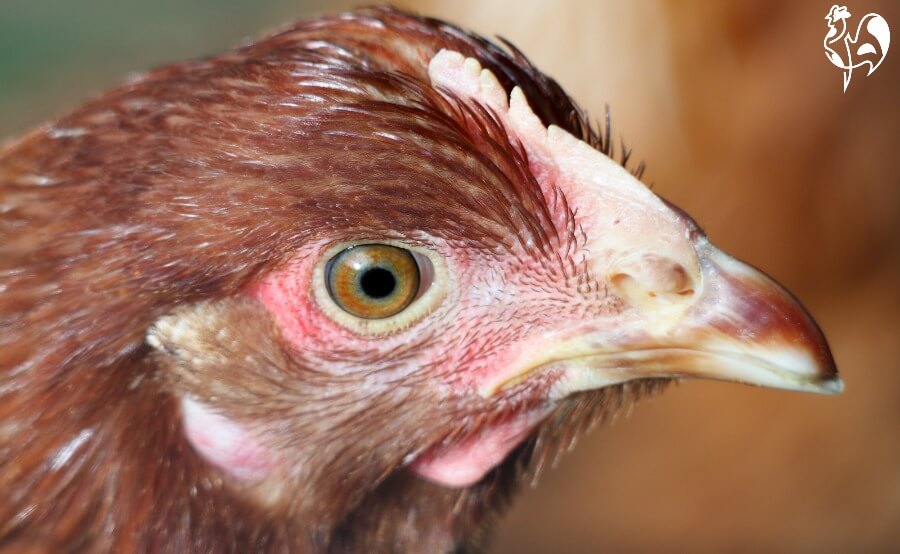 Don't add together supplemental calorie-free until your hens attain point of lay at about 20 weeks.
Don't add together supplemental calorie-free until your hens attain point of lay at about 20 weeks.
Does extra light touch on the quality of the eggs?
No.
Studies(4) take demonstrated that while the number of eggs is increased by bogus light, the quality of the eggs remains the same.
Of class, quality volition be affected past the fact that, in the winter, it's harder for chickens to forage for bugs and plants. Just low-cal itself does non alter the quality.
Making the conclusion: pros and cons of adding lite in the chicken coop.
Pros.
- At that place's no doubtfulness that adding artificial light to the coop during winter months stimulates egg production. So if your budget or your family unit is reliant on a steady supply of eggs, this is one mode to do it.
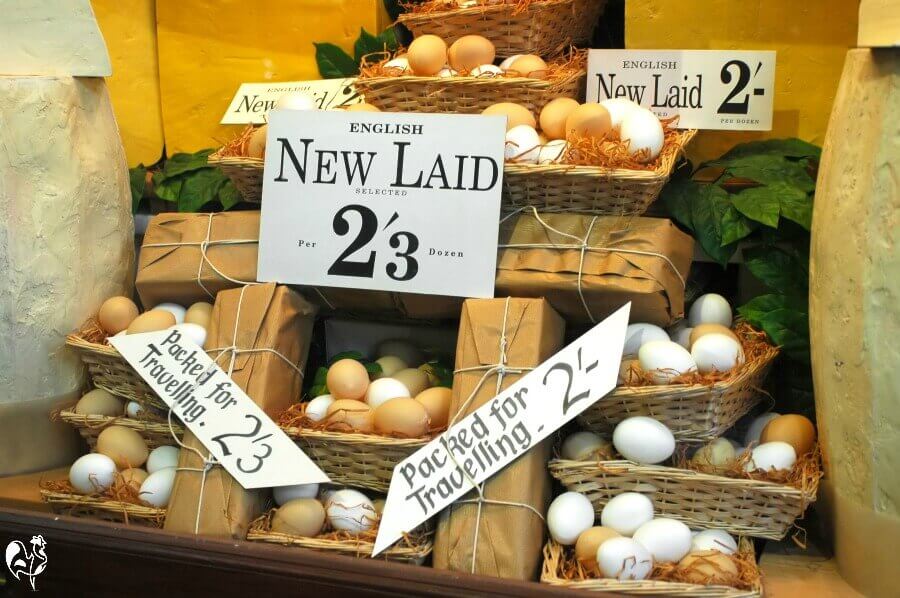
- Studies(e.g. 2) have besides found that increasing daily light in the coop to 16 hours (and therefore nighttime to 8 hours) also increased chickens' sociability, and lessened aggressive or self-destructive behaviour like fighting and feather-pecking.
- And then in areas where your flock has to be confined for long periods due to harsh weather, providing extra light might help better the hens' welfare.
Cons.
- Most chiefly, there's a existent danger of poor wiring or an exposed light bulb in a chicken coop leading to fire. It happens every wintertime, to people who retrieve "information technology will never happen to me".
- For hens younger than xvi weeks, supplemental lite can cause physical problems. And so if you have a mixed age flock, it's better non to light.
- Too bright a lite, or low-cal for too long a fourth dimension, tin can lead to ambitious behaviours. And besides depression a lite will be ineffective.
- It's important to be consistent. Forgetting to turn lights on or off will accept a more detrimental effect than doing nothing.
- In that location will exist an boosted cost in having lights on, admitting small.
How to lite the coop: dos and don'ts.
Do...
- Add the low-cal in the mornings. Work out how many hours of natural daylight you have, and when dawn is. Working backwards, allow for a total of no more than xvi hours.
- Use a timer to ensure consistency. Much easier than getting up in the small hours to plough your chickens' lite on.
- Employ a diffused low-cal that's bright enough for you lot to meet well plenty to read a newspaper inside the coop. The wattage will depend on the size of your coop.
- Exist sure that your light is safe. A good choice is the readily available and inexpensive rope light, hanging above your chickens' roost and out of reach of pecking beaks. They emit no rut and their calorie-free is diffused.
- Something like this is platonic. (This is an chapter link, which means if you click and purchase something, I become a small commission at no cost to you).
- As the days get longer, brand sure you reduce the bogus light time accordingly. Remember: over 17 hours of light is counter-productive.
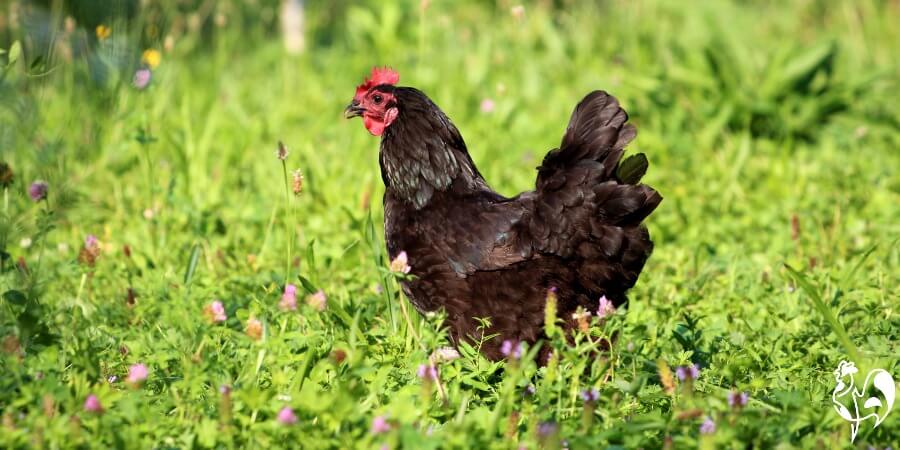 One time Jump arrives, subtract the hours of artificial low-cal.
One time Jump arrives, subtract the hours of artificial low-cal.
Don't...
- ...ever use a heat lamp. Information technology'southward something entirely different, and it's i of the main causes of fires in chicken coops. Avoid at all costs.
- ...lite your coop in the evenings. Chickens can't run into well in the dark. Having a light that goes on at sunset and off in the eye of the night, plunging them into sudden darkness, will create feet and, potentially, injury every bit chickens try to find their roost.
- ...modify your mind partway through the winter. If you all of a sudden withdraw the light, or forget to switch it on, at that place'due south a danger that your hens will get into moult.
- ... add lite to a coop where you take hens less than 16 weeks old. Await until they are 20 weeks or more.
Is there another way of having eggs in winter?
Accept a wait at my egg collection during the summer.
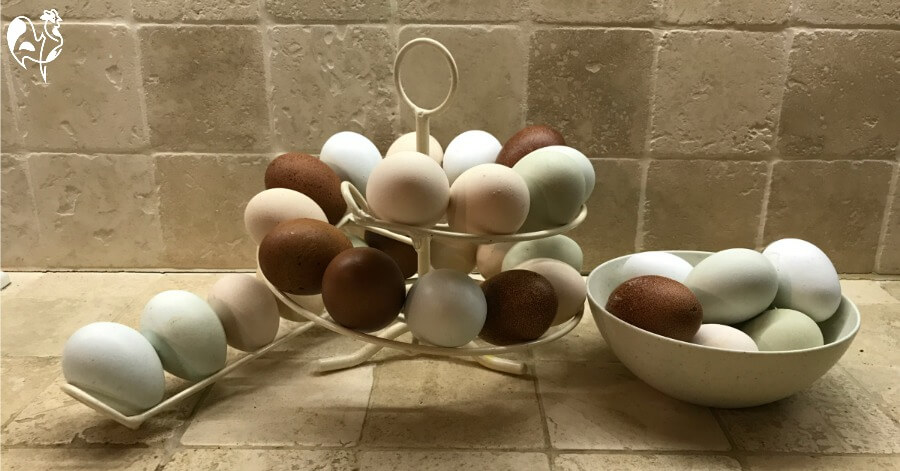
At present take a await at it in wintertime - the photo below was taken in early Dec.
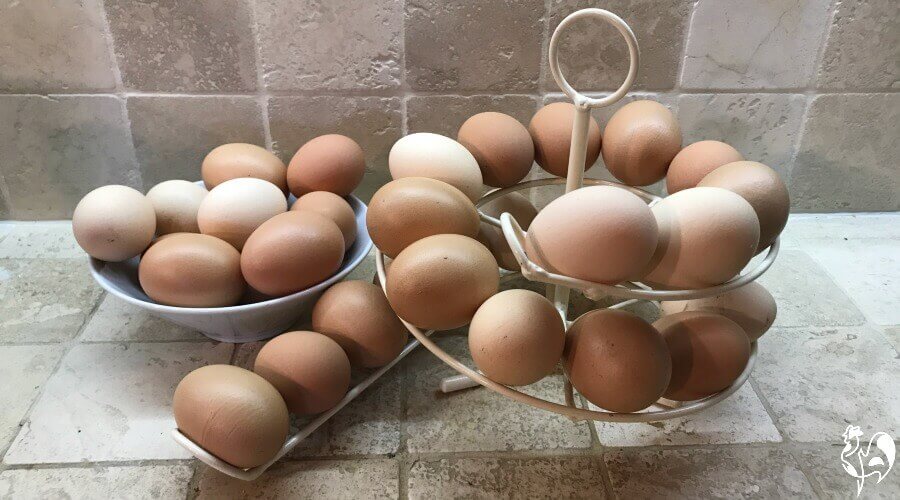
I don't provide actress light in my coop. What explains the difference?
The caption is that all merely my Red Stars have stopped laying.
Red Stars, and other commercial chickens, have been bred for many generations to go along producing eggs all twelvemonth round. My Leghorns do the same. They may irksome down a little during moult and in the depths of wintertime, only they never stop completely.
So if you want a adept egg-producer without adding light to the coop, stick with commercial type breeds.
Conclusion.
Whether or non you lot provide light in your chicken coop during the winter is a matter of personal selection. The testify is that it doesn't physically harm your hens, and may really help prevent damaging behaviours.
My personal choice is not to add light, because I don't want electricity in my coop.
Instead, like others in rural Italy where I live, I view eggs as a seasonal food. I choose to have a good number of hens I know to be splendid egg-layers for nearly of the year.
And when they deadening downwardly or terminate laying, I accept that as their time off work.
Whichever you choose, as long equally your decision is based on proficient quality, accurate, proven facts similar those in this commodity, then it will be exactly the right option for you, your family - and your chickens.
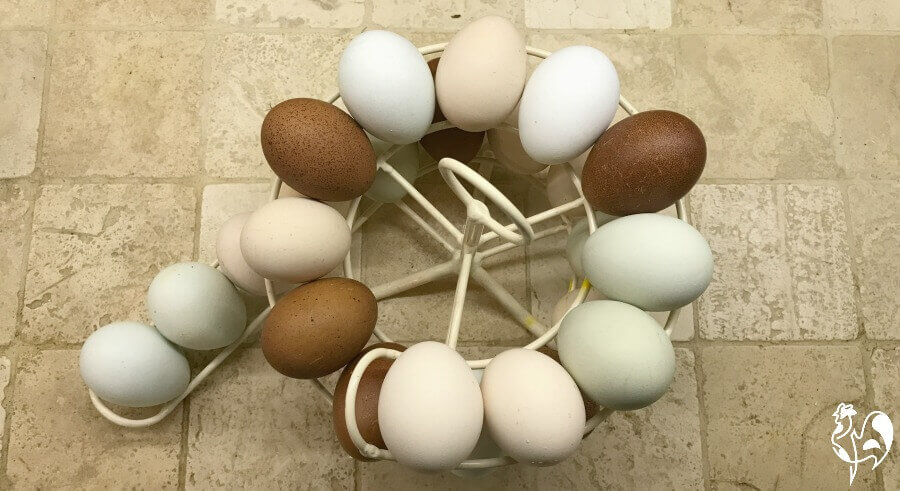 Relish those eggs!
Relish those eggs!
More virtually the seasonal care of chickens and their eggs.
Sources and further reading.
A lot of "facts" you'll detect on the internet are often people'due south individual views, often based on inaccurate data repeated from poor quality sources.
The data I provide in this article and others is based not simply on my own experience, but on evidenced facts from scientific, peer-reviewed research and evidence from highly respected and experienced poultry keepers such equally Gail Dammerow.
Some of the sources I have used for this article are these.
1. Bayram, A and Ozkan, S: Effects of a 16-hour lite, eight-hour nighttime lighting schedule on behavioral traits and performance in male person broiler chickens. Pub. Poultry Scientific discipline Association, 2010.
2. Ostrander, C and Turner, C.Due north.: Effect of various intensities of low-cal on egg production of single comb white Leghorn pullets. Pub. Journal of Poultry Science, 1962.
3. Alphin, R: Impact of light on poultry. Pub. Academy of Delaware,
4. Jacome, I, et al:Influence of artificial lighting on the operation and egg quality of commercial layers: a review. Pub. Brazilian Journal of Poultry Scientific discipline, 2014.
v. Er, D et al: Effect of monochromastic light on the egg quality of laying hens. Pub. Periodical of Applied Poultry research, 2007.

colvincleakettent.blogspot.com
Source: https://www.raising-happy-chickens.com/light-in-the-chicken-coop.html



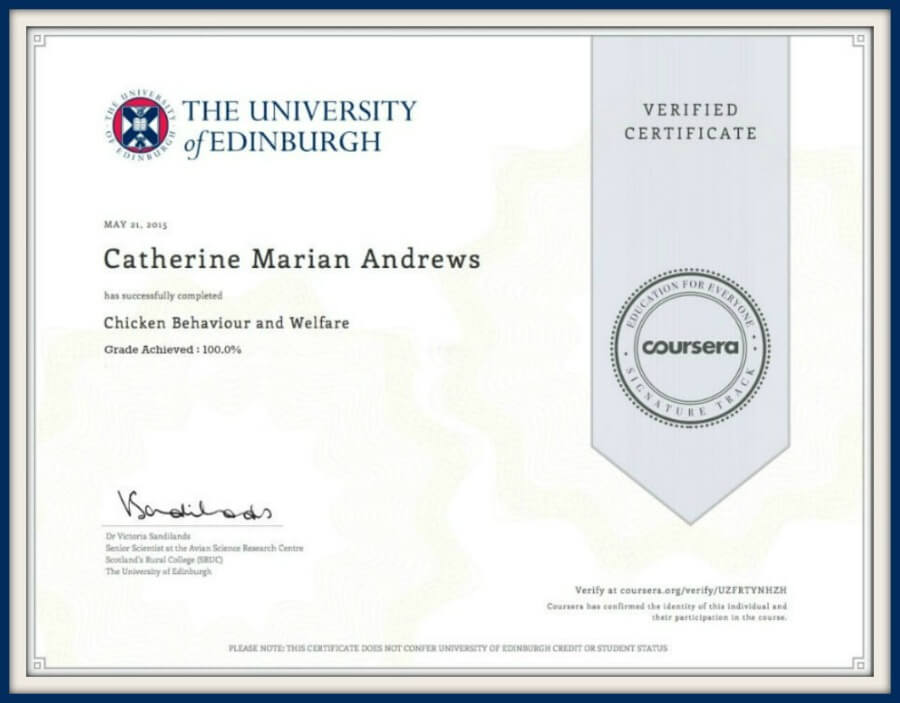
Post a Comment for "What Type of Lighting Is Best for Chicken Houses"